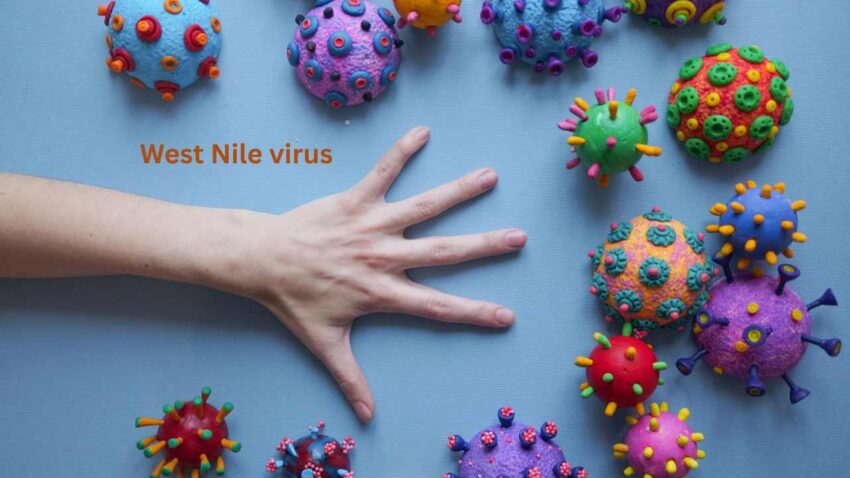West Nile virus (WNV) is an emerging, mosquito‑borne disease that has gained global attention for its potential to cause serious neurological illness. Although most people infected show no symptoms, the virus can be fatal in rare cases. In this article, we explore what causes West Nile virus, how it’s transmitted, its symptoms, diagnosis, treatment, prevention, and public health implications—drawing insights from trusted sources.
What Type of Agent Causes West Nile Virus?
West Nile virus is an enveloped, single‑stranded RNA virus from the Flaviviridae family, belonging to the Flavivirus genus and the Japanese encephalitis antigenic complex,
Natural Reservoirs and Transmission Cycle
WNV maintains a bird–mosquito–bird transmission cycle. Birds serve as the natural reservoir hosts, whereas mosquitoes—primarily of the genus Culex—serve as vectors, acquiring the virus by feeding on infected birds and then passing it on during subsequent blood meals World Health.
How Do Humans Get Infected?
Humans are incidental (or “dead‑end”) hosts who get infected through the bite of an infected mosquito
Rare Transmission Routes:
-
Blood transfusion and organ transplant
-
Transplacental (mother to fetus) transmission
-
Breast‑feeding
-
Laboratory exposure
These modes are exceedingly rare but documented .
Why Humans Don’t Transmit It Further
Humans do not develop viral levels in the bloodstream sufficient for onward transmission—thus, they serve as dead‑end hosts
Epidemiological Background
-
First isolated in 1937 in the West Nile district of Uganda
-
Introduced to the U.S. in 1999, prompting widespread outbreaks
-
Today, the virus is endemic in multiple continents: North and South America, Europe, Africa, Asia, and Australia
Symptoms and Disease Spectrum
-
Approximately 80% of infections are asymptomatic
-
About 20% develop West Nile fever—flu‑like symptoms such as fever, headache, body aches, vomiting, diarrhea, rash
-
Less than 1 in 150 (~1%) develop neuroinvasive disease (encephalitis, meningitis) accompanied by severe symptoms—high fever, neck stiffness, disorientation, muscle weakness, tremors, paralysis—sometimes fatal .
Risk Factors for Severe Disease Include:
-
Older age (especially over 50–60 years)
-
Chronic conditions: cancer, diabetes, hypertension, kidney disease
-
Weakened immune system or transplant recipients
Fatality rate among those with neuroinvasive WNV can be up to 10–17%
Diagnosis and Treatment
Diagnosis:
-
Blood tests (e.g., IgM/IgG ELISAs, PCR testing, neutralization assays)
-
Cerebrospinal fluid (CSF) analysis when neurological signs are present .
Treatment:
-
No specific antiviral treatment or vaccine exists for humans.
-
Management is supportive—fluids, pain relief, respiratory support, and prevention of complications .
Prevention Strategies
Personal Protective Measures:
-
EPA‑approved insect repellents (DEET, picaridin, IR3535, oil of lemon eucalyptus, permethrin-treated clothing)
-
Wear long-sleeved clothing and long pants.
-
Avoid outdoor exposure during dawn and dusk
-
Use mosquito nets, window/door screens, and air-conditioning
-
Eliminate standing water: flowerpot saucers, buckets, abandoned tires, bird baths, gutters
-
Public health control: mosquito surveillance and larvicide spraying .
Animal Measures:
-
Surveillance of bird and horse populations can provide early warning signs.
-
Vaccination is available for horses, not for humans
Blood/Organ Safety:
-
Screening blood and organs in affected areas
-
Deferral policies and nucleic acid testing for donors
Public Health and Environmental Considerations
-
Climate change and warmer temperatures are expanding mosquito habitats and may increase WNV risk in new regions .
-
Regular public education campaigns encourage community action—like eliminating breeding sites and using repellents
Recent Developments (2025)
-
NYC reported its first human WNV cases of 2025, with standard prevention advice issued
-
New Orleans confirmed its first human neuroinvasive case of 2025, prompting local recommendations to reduce mosquito risk
-
Ongoing detection of WNV in mosquito populations across several U.S. counties
Conclusion
West Nile virus is an RNA flavivirus transmitted primarily via Culex mosquitoes that acquire it from infected birds. Human infections are accidental and non‑communicable. Most infected individuals remain asymptomatic, while a small proportion develop serious neurological complications. There is no human vaccine or antiviral treatment, making exposure prevention through personal protection and mosquito control essential. Public health vigilance, especially amidst a warming climate, remains critical to reducing the disease burden.
(FAQ Section)
Q1: Can West Nile virus spread from person to person?
A1: Not through casual contact. Rarely, it may transmit via blood transfusions, organ transplants, pregnancy, or breastfeeding .
Q2: Who is most at risk of severe West Nile disease?
A2: Older adults (50–60+), those with weakened immune systems, and people with chronic health conditions like diabetes, hypertension, cancers, or kidney disease.
Q3: Is there a vaccine available?
A3: A vaccine exists for horses but not for humans
Q4: When is West Nile virus most common?
A4: In summer and early fall, particularly July through September, when mosquito activity peaks
Q5: How can I avoid getting infected?
A5: Use EPA‑approved repellents, wear covering clothing, avoid peak mosquito biting times, eliminate breeding sites, and support community vector control programs
Q6: Can climate change affect West Nile spread?
A6: Yes. Warmer climates expand mosquito habitats and may lead to spread into new areas The Guardian.
